
Historical background:
The concept of a "World Oceans Day" was proposed for the first time in 1992 at the Earth Summit in Rio de Janeiro as a way to celebrate the oceans shared by the countries of the world and our personal relationship with the sea, as well as as to raise awareness about the crucial role oceans play in our lives and the different ways in which people can help protect them.
The Intergovernmental Oceanographic Commission (IOC) of the United Nations Educational, Scientific and Cultural Organization (UNESCO) sponsors the World Ocean Network, which since 2002 has played a key role in organizing events to raise public awareness about the importance of the ocean on June 8.
On December 5, 2008, the General Assembly of the United Nations, on the initiative of Canada, resolved that from June 8 to June 8 would be World Oceans Day.
That is why as of 2009 it is officially celebrated every June 8th this day.
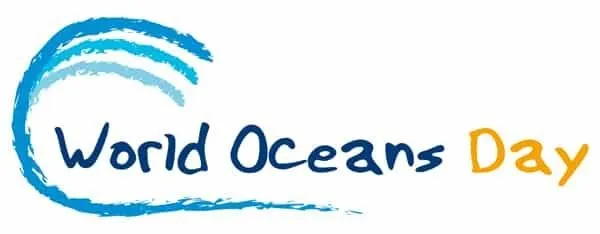
Today we celebrate World Oceans Day to remind everyone of the great role that the oceans play in our lives. They are the lungs of our planet because they generate most of the oxygen that we breathe, it could also be said that they are the heart of our planet because in the same way that the heart beats and cause that the blood circulate throughout all our body, the oceans connect to People from all over the world, regardless of where they live. In addition, they cover two thirds of the surface of the earth, and through their interactions with the atmosphere, lithosphere and the biosphere, play an important role in shaping the conditions that make possible the different life forms of the planet. They serve as habitat for a vast collection of plants and animals, providing us with food, energy and multiple resources.
In short, this celebration is a good reason to admire together the beauty, the richness and the potential of the oceans.
The themes of recent years for the celebration of World Oceans Day have been:
2018: "Clean our oceans."
2017: "Our oceans, our future".
2016: "Healthy oceans, a healthy planet".
2015: "Give your hand to the oceans."
2014: "Let us assure everyone that the oceans can keep us in the future".
2013: "Together we have the power to protect the ocean."
2012: "Youth: the new stage for Change".
2011: "Our oceans: for a green future".
2010: "Our oceans: opportunities and challenges".
2009: "Our oceans, our responsibility".
Now, in commemoration of this day, I consider it appropriate that we all know a little about the 5 oceans of our home, the planet earth. The oceans are divided as follows:
Oceans of large dimensions:
• Pacific Ocean
• Atlantic Ocean.
• Indian Ocean
Oceans of smaller dimensions:
• Arctic Ocean.
• Antartic Ocean.
- The Pacific Ocean: It is the largest ocean on Earth, occupying a third of its surface. It extends approximately 15,000 km from the Bering Sea in the Arctic to the north, to the frozen margins of the Ross Sea in Antarctica to the south. The Pacific contains more than 25,000 islands (more than all the other oceans in the world combined), almost all of which are located south of the Equator. The Pacific covers an area of 165,700,000 km2. The lowest point of the surface of the earth's crust, the Mariana trench, is found in the Pacific.
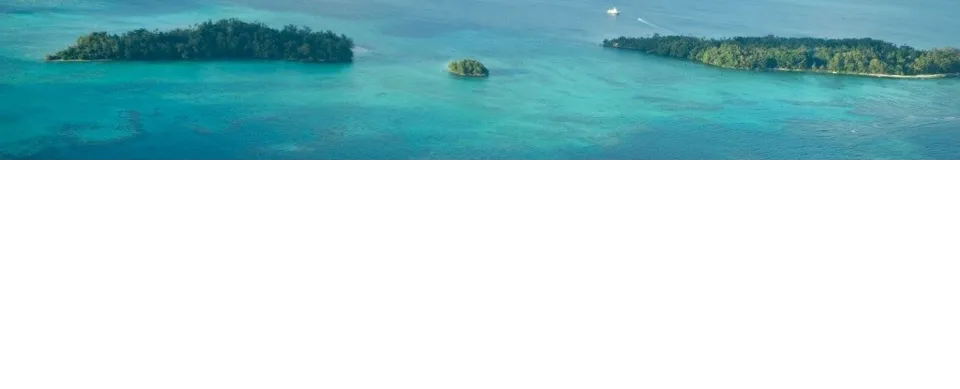
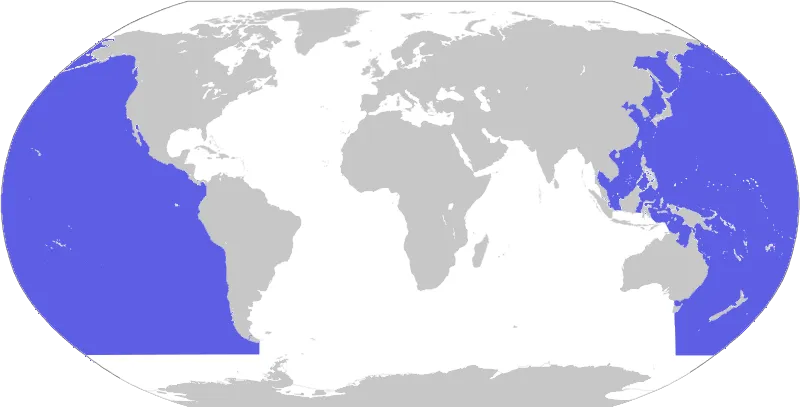
- The Atlantic Ocean: Separates America, Europe and Africa. It extends from the Arctic Ocean in the north to the Antarctic in the south. The Equator divides it artificially into two parts, North Atlantic and South Atlantic. Its name comes from the Greek Atlas, one of the titans of Greek mythology. It has an S shape and an extension of 106.4 million km2, being the second in extension, after the Pacific Ocean, covering approximately 20% of the Earth's surface. Its water volume is 354.7 million km3 if the adjacent seas are counted, or 323.6 if it is not counted. The maximum width of the Atlantic varies from 2,848 km between Brazil and Liberia to 4,830 km between the United States and North Africa.
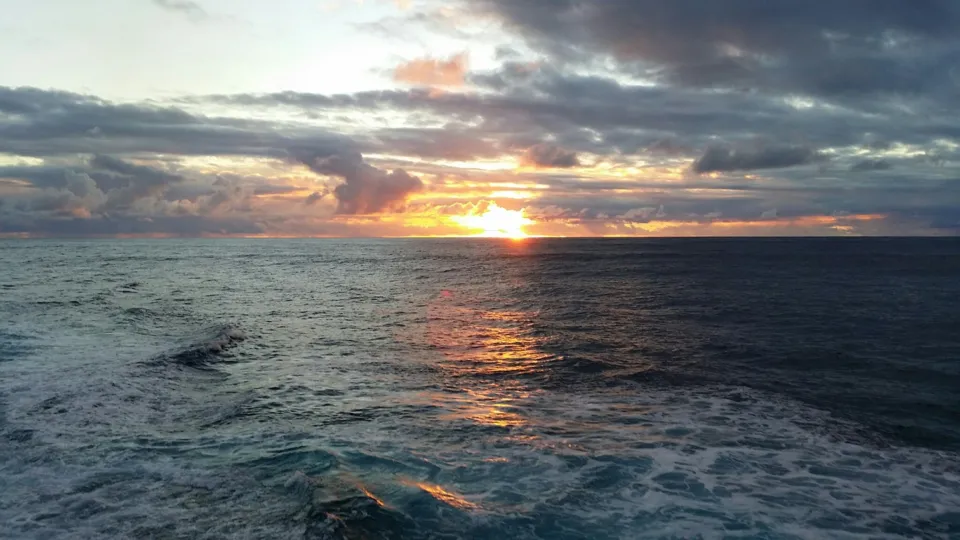
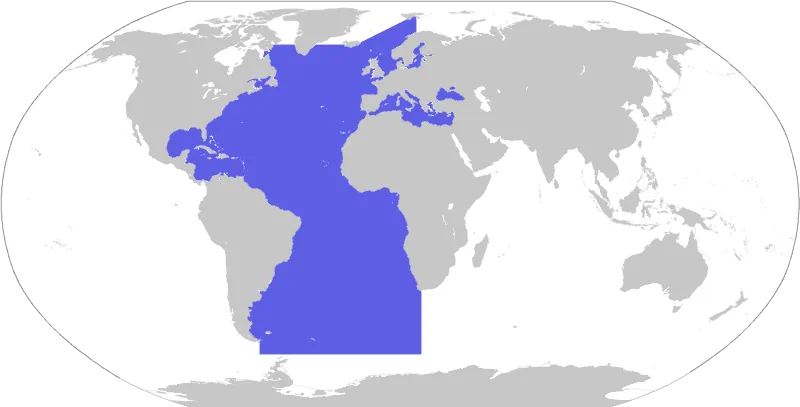
3.The Indian Ocean: It is the third largest volume of water in the world, and covers approximately 20% of the Earth's surface. It is limited to the north by the south of Asia; to the west by the Arabica Peninsula and Africa; to the east by the Malaya Peninsula, the Sunda Islands, and Australia; and to the south by Antarctica. The ocean measures approximately 10,000 km wide between the southern tip of Africa and Australia; its area is 73,556,000 km², including the Red Sea and the Persian Gulf. The volume of the ocean is estimated at 292,131,000 km³. Small islands dot the continental edges.
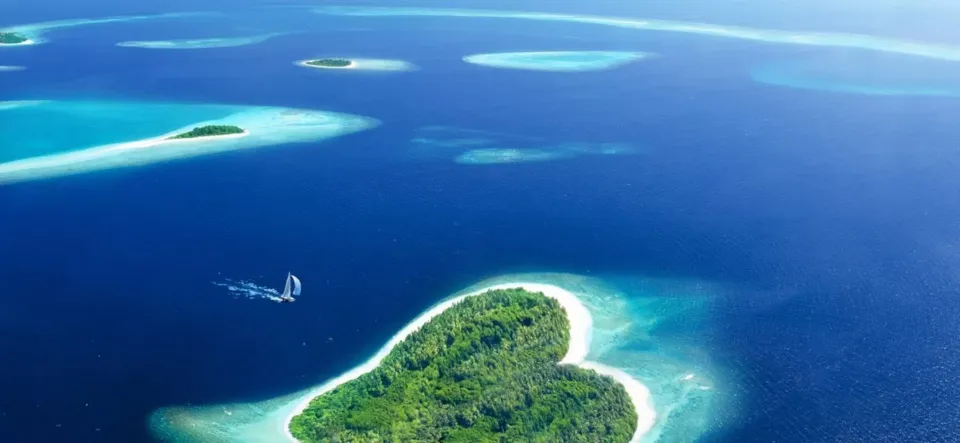
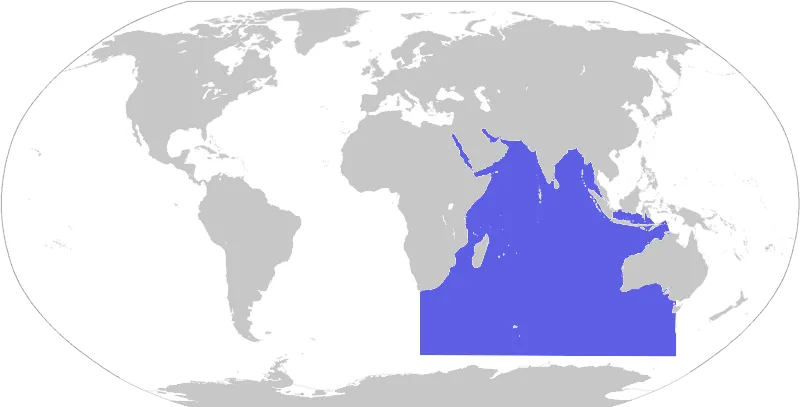
- The Arctic Ocean: The Arctic Ocean is the smallest of the world's oceans. It surrounds the North Pole and extends to the north of Europe, Asia and America. It occupies an extension of about 14,100,000 km² and, the hundred m on the continental shelf; being its average of about 1205 m. This ocean takes contact with the Atlantic Ocean from the north, receiving large masses of water through the Strait of Fram and the Barents Sea. It is also in contact with the Pacific Ocean through the Bering Strait, between Russia and Alaska.
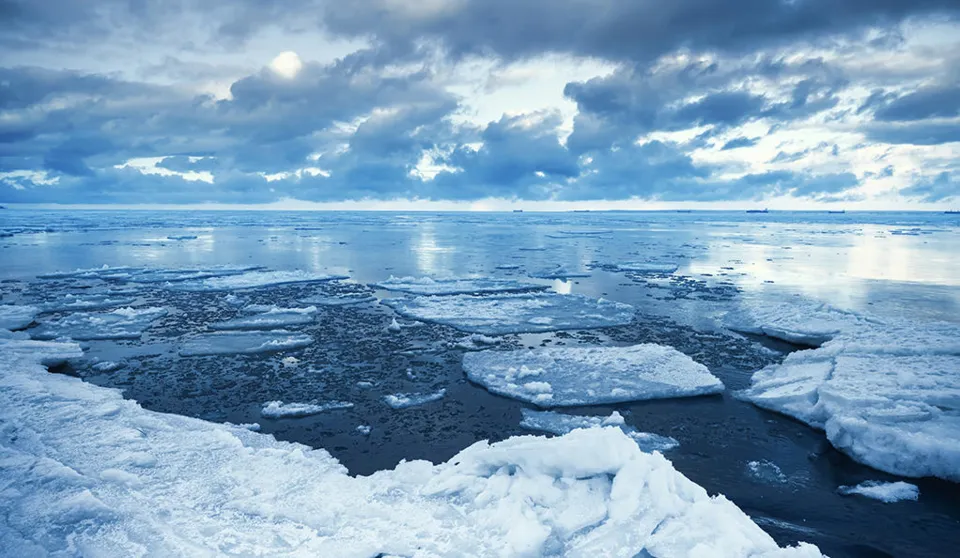
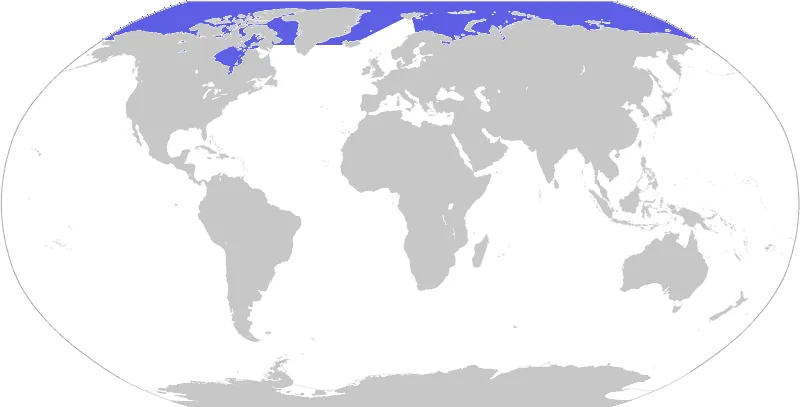
5.Antarctic Ocean: It extends from the Antarctic coast to 60 ° S, conventional limit with the Atlantic Ocean, the Pacific Ocean and the Indian Ocean. It is the penultimate ocean in extension. Formally, its extension was defined by the International Hydrographic Organization in 2000 and coincides with the limits set by the Antarctic Treaty. The Antarctic Ocean next to the Arctic, are the only ones to circle the globe completely. It completely surrounds Antarctica. It has an area of 20,327,000 km², a figure that includes the peripheral seas: the Amundsen Sea, the Bellingshausen Sea, part of the Drake Passage, the Ross Sea and the Weddell Sea. The mainland is visible on the ocean with 17,968 km of coastline.
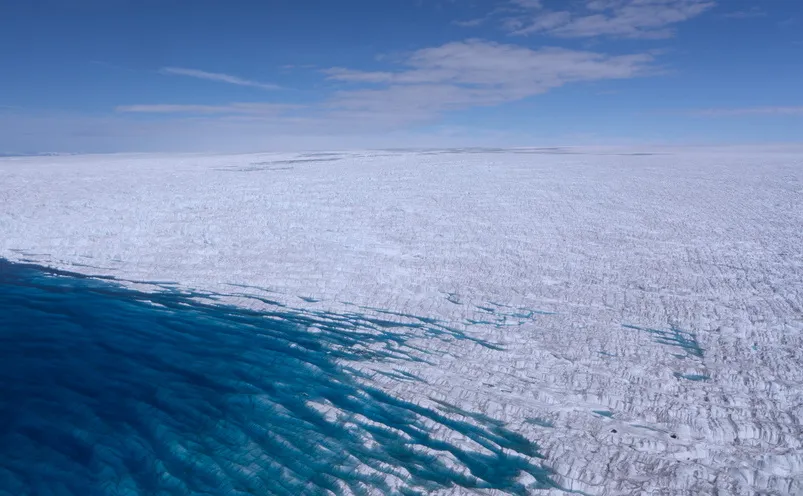
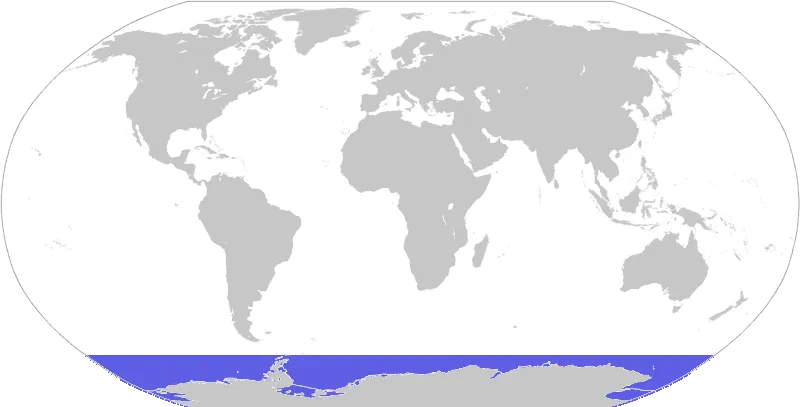
A little about the oceans...
• Oceans cover 71% of the Earth's surface.
• They contain nine tenths of water resources and 90 percent of the world's living biomass
• They are the primary source of food for more than three and a half billion people.
• They are a vital economic resource that provides their livelihoods to millions of people around the world.
• Approximately 90 percent of international trade is transported by sea.
• More than 29 percent of the world's oil production comes from the oceans.
• Beach tourism and cruises are an important source of income for many countries
• Every year around 130 million tons of fish are caught worldwide, with an approximate value of 60 billion dollars, and the fishing sector and aquaculture alone employ 150 million people.
• The oceans, through their interactions with the atmosphere, lithosphere and biosphere, play an important role in shaping the conditions that make possible the different life forms of the planet. In fact, without the oceans life would not exist on our planet.
• The oceans absorb around 25% of the CO2 generated by human activity annually.
• In relation to life on our planet, between 50% and 80% is under the surface of the ocean. Less than 10% of this space has been explored so far.
• The set of coastal ecosystems that act as carbon sinks (mangroves, salt marshes and underwater meadows) can contain a quantity of carbon five times higher than that of tropical forests.

While the oceans seem to have no limits, their ability to withstand human activities is limited, especially since they also have to face the threats posed by climate change. According to data provided by the UN, the oceans cover more than 70% of the surface of the globe and only 1% is protected, so it is necessary to adopt urgent measures worldwide to relieve the world's oceans of the many pressures to which they are subjected, and to protect them from future dangers that may exceed the limits of their capacity.
On this World Day of the Oceans, let us commit ourselves to protecting our oceans and using their gifts in a peaceful, equitable and sustainable manner for generations to come. The health of the oceans is essential for the health of the planet and the future health of all.

The concept of a "World Oceans Day" was proposed for the first time in 1992 at the Earth Summit in Rio de Janeiro as a way to celebrate the oceans shared by the countries of the world and our personal relationship with the sea, as well as as to raise awareness about the crucial role oceans play in our lives and the different ways in which people can help protect them.
The Intergovernmental Oceanographic Commission (IOC) of the United Nations Educational, Scientific and Cultural Organization (UNESCO) sponsors the World Ocean Network, which since 2002 has played a key role in organizing events to raise public awareness about the importance of the ocean on June 8.
On December 5, 2008, the General Assembly of the United Nations, on the initiative of Canada, resolved that from June 8 to June 8 would be World Oceans Day.
That is why as of 2009 it is officially celebrated every June 8th this day.

Today we celebrate World Oceans Day to remind everyone of the great role that the oceans play in our lives. They are the lungs of our planet because they generate most of the oxygen that we breathe, it could also be said that they are the heart of our planet because in the same way that the heart beats and cause that the blood circulate throughout all our body, the oceans connect to People from all over the world, regardless of where they live. In addition, they cover two thirds of the surface of the earth, and through their interactions with the atmosphere, lithosphere and the biosphere, play an important role in shaping the conditions that make possible the different life forms of the planet. They serve as habitat for a vast collection of plants and animals, providing us with food, energy and multiple resources.
In short, this celebration is a good reason to admire together the beauty, the richness and the potential of the oceans.
The themes of recent years for the celebration of World Oceans Day have been:
2018: "Clean our oceans."
2017: "Our oceans, our future".
2016: "Healthy oceans, a healthy planet".
2015: "Give your hand to the oceans."
2014: "Let us assure everyone that the oceans can keep us in the future".
2013: "Together we have the power to protect the ocean."
2012: "Youth: the new stage for Change".
2011: "Our oceans: for a green future".
2010: "Our oceans: opportunities and challenges".
2009: "Our oceans, our responsibility".
Now, in commemoration of this day, I consider it appropriate that we all know a little about the 5 oceans of our home, the planet earth. The oceans are divided as follows:
Oceans of large dimensions:
• Pacific Ocean
• Atlantic Ocean.
• Indian Ocean
Oceans of smaller dimensions:
• Arctic Ocean.
• Antartic Ocean.
- The Pacific Ocean: It is the largest ocean on Earth, occupying a third of its surface. It extends approximately 15,000 km from the Bering Sea in the Arctic to the north, to the frozen margins of the Ross Sea in Antarctica to the south. The Pacific contains more than 25,000 islands (more than all the other oceans in the world combined), almost all of which are located south of the Equator. The Pacific covers an area of 165,700,000 km2. The lowest point of the surface of the earth's crust, the Mariana trench, is found in the Pacific.


- The Atlantic Ocean: Separates America, Europe and Africa. It extends from the Arctic Ocean in the north to the Antarctic in the south. The Equator divides it artificially into two parts, North Atlantic and South Atlantic. Its name comes from the Greek Atlas, one of the titans of Greek mythology. It has an S shape and an extension of 106.4 million km2, being the second in extension, after the Pacific Ocean, covering approximately 20% of the Earth's surface. Its water volume is 354.7 million km3 if the adjacent seas are counted, or 323.6 if it is not counted. The maximum width of the Atlantic varies from 2,848 km between Brazil and Liberia to 4,830 km between the United States and North Africa.


3.The Indian Ocean: It is the third largest volume of water in the world, and covers approximately 20% of the Earth's surface. It is limited to the north by the south of Asia; to the west by the Arabica Peninsula and Africa; to the east by the Malaya Peninsula, the Sunda Islands, and Australia; and to the south by Antarctica. The ocean measures approximately 10,000 km wide between the southern tip of Africa and Australia; its area is 73,556,000 km², including the Red Sea and the Persian Gulf. The volume of the ocean is estimated at 292,131,000 km³. Small islands dot the continental edges.


- The Arctic Ocean: The Arctic Ocean is the smallest of the world's oceans. It surrounds the North Pole and extends to the north of Europe, Asia and America. It occupies an extension of about 14,100,000 km² and, the hundred m on the continental shelf; being its average of about 1205 m. This ocean takes contact with the Atlantic Ocean from the north, receiving large masses of water through the Strait of Fram and the Barents Sea. It is also in contact with the Pacific Ocean through the Bering Strait, between Russia and Alaska.


5.Antarctic Ocean: It extends from the Antarctic coast to 60 ° S, conventional limit with the Atlantic Ocean, the Pacific Ocean and the Indian Ocean. It is the penultimate ocean in extension. Formally, its extension was defined by the International Hydrographic Organization in 2000 and coincides with the limits set by the Antarctic Treaty. The Antarctic Ocean next to the Arctic, are the only ones to circle the globe completely. It completely surrounds Antarctica. It has an area of 20,327,000 km², a figure that includes the peripheral seas: the Amundsen Sea, the Bellingshausen Sea, part of the Drake Passage, the Ross Sea and the Weddell Sea. The mainland is visible on the ocean with 17,968 km of coastline.


A little about the oceans...
• Oceans cover 71% of the Earth's surface.
• They contain nine tenths of water resources and 90 percent of the world's living biomass
• They are the primary source of food for more than three and a half billion people.
• They are a vital economic resource that provides their livelihoods to millions of people around the world.
• Approximately 90 percent of international trade is transported by sea.
• More than 29 percent of the world's oil production comes from the oceans.
• Beach tourism and cruises are an important source of income for many countries
• Every year around 130 million tons of fish are caught worldwide, with an approximate value of 60 billion dollars, and the fishing sector and aquaculture alone employ 150 million people.
• The oceans, through their interactions with the atmosphere, lithosphere and biosphere, play an important role in shaping the conditions that make possible the different life forms of the planet. In fact, without the oceans life would not exist on our planet.
• The oceans absorb around 25% of the CO2 generated by human activity annually.
• In relation to life on our planet, between 50% and 80% is under the surface of the ocean. Less than 10% of this space has been explored so far.
• The set of coastal ecosystems that act as carbon sinks (mangroves, salt marshes and underwater meadows) can contain a quantity of carbon five times higher than that of tropical forests.

While the oceans seem to have no limits, their ability to withstand human activities is limited, especially since they also have to face the threats posed by climate change. According to data provided by the UN, the oceans cover more than 70% of the surface of the globe and only 1% is protected, so it is necessary to adopt urgent measures worldwide to relieve the world's oceans of the many pressures to which they are subjected, and to protect them from future dangers that may exceed the limits of their capacity.
On this World Day of the Oceans, let us commit ourselves to protecting our oceans and using their gifts in a peaceful, equitable and sustainable manner for generations to come. The health of the oceans is essential for the health of the planet and the future health of all.

The Intergovernmental Oceanographic Commission (IOC) of the United Nations Educational, Scientific and Cultural Organization (UNESCO) sponsors the World Ocean Network, which since 2002 has played a key role in organizing events to raise public awareness about the importance of the ocean on June 8.
On December 5, 2008, the General Assembly of the United Nations, on the initiative of Canada, resolved that from June 8 to June 8 would be World Oceans Day.
That is why as of 2009 it is officially celebrated every June 8th this day.

Today we celebrate World Oceans Day to remind everyone of the great role that the oceans play in our lives. They are the lungs of our planet because they generate most of the oxygen that we breathe, it could also be said that they are the heart of our planet because in the same way that the heart beats and cause that the blood circulate throughout all our body, the oceans connect to People from all over the world, regardless of where they live. In addition, they cover two thirds of the surface of the earth, and through their interactions with the atmosphere, lithosphere and the biosphere, play an important role in shaping the conditions that make possible the different life forms of the planet. They serve as habitat for a vast collection of plants and animals, providing us with food, energy and multiple resources.
In short, this celebration is a good reason to admire together the beauty, the richness and the potential of the oceans.
The themes of recent years for the celebration of World Oceans Day have been:
2018: "Clean our oceans."
2017: "Our oceans, our future".
2016: "Healthy oceans, a healthy planet".
2015: "Give your hand to the oceans."
2014: "Let us assure everyone that the oceans can keep us in the future".
2013: "Together we have the power to protect the ocean."
2012: "Youth: the new stage for Change".
2011: "Our oceans: for a green future".
2010: "Our oceans: opportunities and challenges".
2009: "Our oceans, our responsibility".
Now, in commemoration of this day, I consider it appropriate that we all know a little about the 5 oceans of our home, the planet earth. The oceans are divided as follows:
Oceans of large dimensions:
• Pacific Ocean
• Atlantic Ocean.
• Indian Ocean
Oceans of smaller dimensions:
• Arctic Ocean.
• Antartic Ocean.
- The Pacific Ocean: It is the largest ocean on Earth, occupying a third of its surface. It extends approximately 15,000 km from the Bering Sea in the Arctic to the north, to the frozen margins of the Ross Sea in Antarctica to the south. The Pacific contains more than 25,000 islands (more than all the other oceans in the world combined), almost all of which are located south of the Equator. The Pacific covers an area of 165,700,000 km2. The lowest point of the surface of the earth's crust, the Mariana trench, is found in the Pacific.


- The Atlantic Ocean: Separates America, Europe and Africa. It extends from the Arctic Ocean in the north to the Antarctic in the south. The Equator divides it artificially into two parts, North Atlantic and South Atlantic. Its name comes from the Greek Atlas, one of the titans of Greek mythology. It has an S shape and an extension of 106.4 million km2, being the second in extension, after the Pacific Ocean, covering approximately 20% of the Earth's surface. Its water volume is 354.7 million km3 if the adjacent seas are counted, or 323.6 if it is not counted. The maximum width of the Atlantic varies from 2,848 km between Brazil and Liberia to 4,830 km between the United States and North Africa.


3.The Indian Ocean: It is the third largest volume of water in the world, and covers approximately 20% of the Earth's surface. It is limited to the north by the south of Asia; to the west by the Arabica Peninsula and Africa; to the east by the Malaya Peninsula, the Sunda Islands, and Australia; and to the south by Antarctica. The ocean measures approximately 10,000 km wide between the southern tip of Africa and Australia; its area is 73,556,000 km², including the Red Sea and the Persian Gulf. The volume of the ocean is estimated at 292,131,000 km³. Small islands dot the continental edges.


- The Arctic Ocean: The Arctic Ocean is the smallest of the world's oceans. It surrounds the North Pole and extends to the north of Europe, Asia and America. It occupies an extension of about 14,100,000 km² and, the hundred m on the continental shelf; being its average of about 1205 m. This ocean takes contact with the Atlantic Ocean from the north, receiving large masses of water through the Strait of Fram and the Barents Sea. It is also in contact with the Pacific Ocean through the Bering Strait, between Russia and Alaska.


5.Antarctic Ocean: It extends from the Antarctic coast to 60 ° S, conventional limit with the Atlantic Ocean, the Pacific Ocean and the Indian Ocean. It is the penultimate ocean in extension. Formally, its extension was defined by the International Hydrographic Organization in 2000 and coincides with the limits set by the Antarctic Treaty. The Antarctic Ocean next to the Arctic, are the only ones to circle the globe completely. It completely surrounds Antarctica. It has an area of 20,327,000 km², a figure that includes the peripheral seas: the Amundsen Sea, the Bellingshausen Sea, part of the Drake Passage, the Ross Sea and the Weddell Sea. The mainland is visible on the ocean with 17,968 km of coastline.


A little about the oceans...
• Oceans cover 71% of the Earth's surface.
• They contain nine tenths of water resources and 90 percent of the world's living biomass
• They are the primary source of food for more than three and a half billion people.
• They are a vital economic resource that provides their livelihoods to millions of people around the world.
• Approximately 90 percent of international trade is transported by sea.
• More than 29 percent of the world's oil production comes from the oceans.
• Beach tourism and cruises are an important source of income for many countries
• Every year around 130 million tons of fish are caught worldwide, with an approximate value of 60 billion dollars, and the fishing sector and aquaculture alone employ 150 million people.
• The oceans, through their interactions with the atmosphere, lithosphere and biosphere, play an important role in shaping the conditions that make possible the different life forms of the planet. In fact, without the oceans life would not exist on our planet.
• The oceans absorb around 25% of the CO2 generated by human activity annually.
• In relation to life on our planet, between 50% and 80% is under the surface of the ocean. Less than 10% of this space has been explored so far.
• The set of coastal ecosystems that act as carbon sinks (mangroves, salt marshes and underwater meadows) can contain a quantity of carbon five times higher than that of tropical forests.

While the oceans seem to have no limits, their ability to withstand human activities is limited, especially since they also have to face the threats posed by climate change. According to data provided by the UN, the oceans cover more than 70% of the surface of the globe and only 1% is protected, so it is necessary to adopt urgent measures worldwide to relieve the world's oceans of the many pressures to which they are subjected, and to protect them from future dangers that may exceed the limits of their capacity.
On this World Day of the Oceans, let us commit ourselves to protecting our oceans and using their gifts in a peaceful, equitable and sustainable manner for generations to come. The health of the oceans is essential for the health of the planet and the future health of all.
